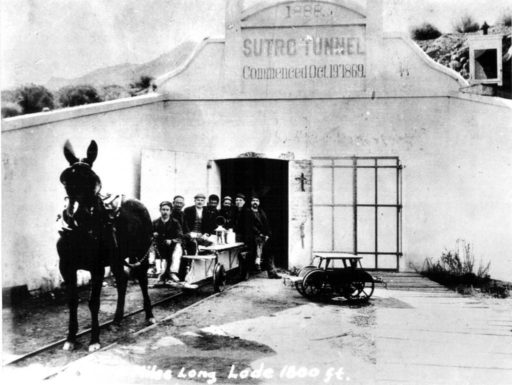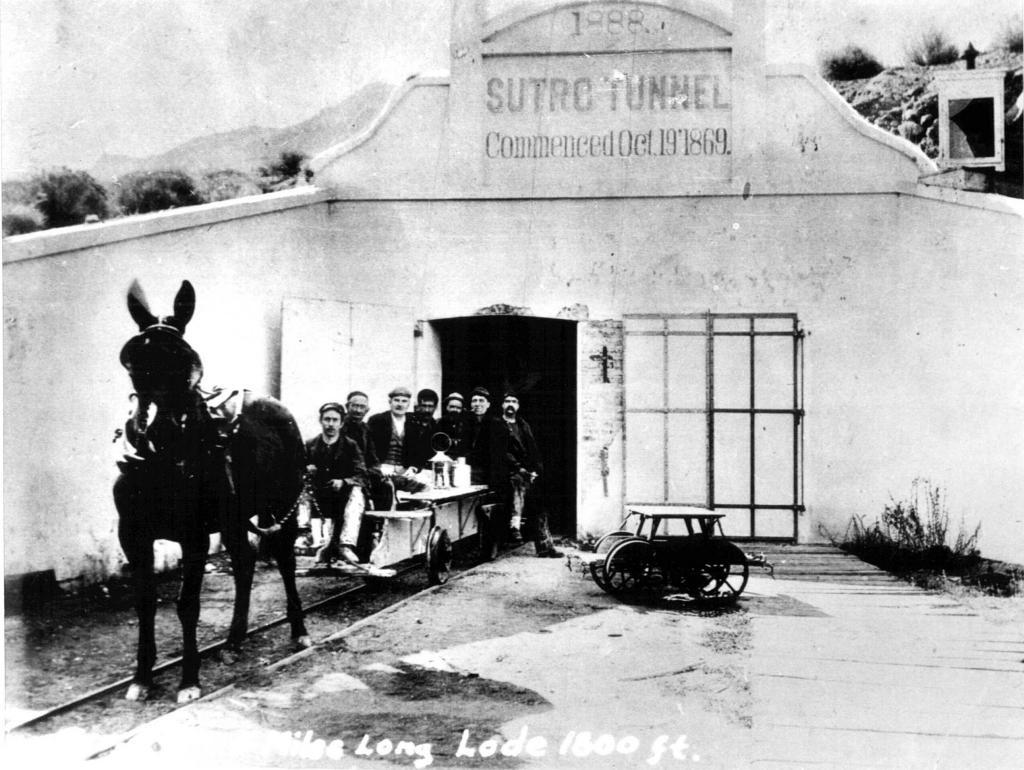NEVADA MINING INGENUITY: THE SUTRO TUNNEL
October 19 marks the anniversary of the Sutro Tunnel’s construction. Read below to learn about one of the most ambitious engineering projects of the 19th century.
 The Problem
The Problem
As Comstock mine shafts went deeper underground in search of ore, mines started running into a new problem: water, and lots of it. With no easy solution, mines pumped water to the surface at a huge expense.
Enter Adolph Sutro
Engineer Adolph Sutro began approaching mines with a solution. Instead of pumping water up to the surface, Sutro proposed constructing a tunnel from the Carson River Valley that would connect to mines and drain water, saving operations a substantial amount of money. The tunnel had some initial support, but several mines opposed the idea, fearing Sutro would use the tunnel to claim mineral rights.
Construction
After years of fighting and securing capital, Sutro was finally able to raise enough funding to start construction. On October 19, 1869, work began near present-day Dayton on what would eventually become a 20,489-foot long tunnel. On September 1, 1878, the tunnel connected with the Savage Mine. Remarkably, the meeting point was just a foot and a half off its intended target.
Mixed Results
The Sutro Tunnel worked as advertised, capable of handling up to four-million gallons of water daily. Unfortunately, it never really had the opportunity to run at full capacity. Mining in the Comstock had declined significantly by the time of its completion. Despite the bad timing, the Sutro Tunnel still represents a major engineering accomplishment and is a symbol of the Nevada mining industry’s innovative spirit.
As for Sutro, he sold his shares in the tunnel shortly after its completion for a $1 million-dollar profit ($25 million in 2018 dollars). He then moved to San Francisco, became a successful real estate investor, and was even elected mayor in 1894.

